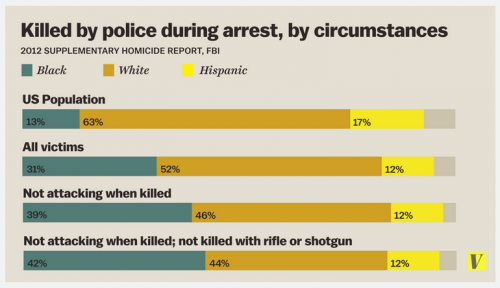As the 2016 presidential campaign enters the final stretch, Donald Trump has doubled down on his hard-line stance on immigration. In his August 31st immigration policy speech, Trump proposed implementing extreme vetting and employing a deportation force, and opposed amnesty for more than 11 million undocumented immigrants already in the U.S. Polling by Latino Decisions, a leader in Latino political opinion research, indicates Trump’s current poll numbers among Latinos have slipped to 19%. However, given Trump’s proposed policies and charged rhetoric against Latinos, it might seem perplexing that even that many Latinos still support Trump.
Recently on MSNBC’s All in With Chris Hayes, Joy Reid asked Latinos for Trump co-founder Marco Gutierrez whether Trump’s immigration policies would fundamentally drive Latinos away from the Republican party. Gutierrez replied that Trump’s message was “tough” but necessary; asked to clarify, he responded with the comment that immediately spawned a new internet meme:
My [Mexican] culture is a very dominant culture. And it’s imposing. And it’s causing problems. If you don’t do something about it, you’re gonna have taco trucks every corner.
Gutierrez defended his assessment, saying “you guys defend a Mexico that doesn’t exist anymore. There is a new Mexico that’s rising with crime and we need to stop that. And that stops right here [in America].”
.@AZDemParty updated its sign, y’all. Cc @AZGOP @azcentral @realDonaldTrump pic.twitter.com/ntIUFZMQq5
— YvonneWingettSanchez (@yvonnewingett) September 2, 2016
His comments illustrate important concepts related to the psychology of ethnic identity. First, people differ in how strongly they affiliate with their Mexican or Latino identity; some feel more strongly identified and others less so. Second, Latinos in the U.S. navigate two cultural identities: their ethnic identity and their American identity. And these identity differences are linked to political ideology.
My co-authors and I asked 323 U.S.-born Mexican Americans about their political ideology and socioeconomic status, the strength of their identification with Mexican and American cultures, and their attitudes toward acculturating to American culture. Those who strongly identified with Mexican culture were more likely to support the integration of both their Mexican and American identities into one unified identity, such as maintaining their own cultural traditions while also adapting to Anglo-American customs. These leaned more liberal. In contrast, those who held weak Mexican identification were more likely to support full assimilation to American culture. These were more moderate or conservative in their ideologies.
Their socioeconomic status also influenced their political ideology. Those with higher socioeconomic status were significantly less liberal, but this was most true for those participants who both belonged to higher social classes and had the weakest identification with Mexican culture.
This may explain why some Latinos aren’t put off by Trump’s anti-immigrant rhetoric. Latinos who support Trump may feel less strongly identified with their ethnic culture and have a stronger desire to identify with American culture. They probably also believe that other Latinos should assimilate fully into American culture and minimize ties or connections to their heritage culture. These beliefs comport with Trump’s message that immigrants need to “successfully assimilate” in order to join our country.
Given that Mexican Americans with a strong ethnic identification were more likely to be liberal and support biculturalism over assimilation attitudes, it’s quite unlikely that Trump will be successful in winning over many Latino constituents who don’t already support him. In fact, being photographed eating taco salad and exclaiming “I love Hispanics!” could backfire with conservative Latinos who do support him because that type of appeal makes salient a cultural identity that is unimportant to them, or worse, lumps them into a cultural group they have actively sought to minimize.
Happy #CincoDeMayo! The best taco bowls are made in Trump Tower Grill. I love Hispanics! https://t.co/ufoTeQd8yA pic.twitter.com/k01Mc6CuDI
— Donald J. Trump (@realDonaldTrump) May 5, 2016
Laura P. Naumann, PhD is a personality psychologist who teaches in the Department of Social Sciences at Nevada State College. Her research interests include the expression and perception of personality as well as individual differences in racial/ethnic identity development. You can learn more about her here.







